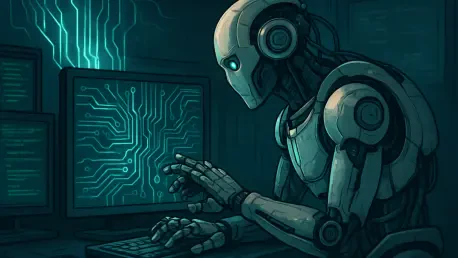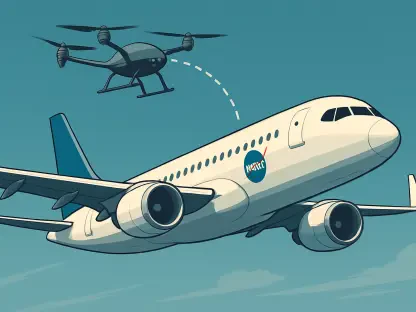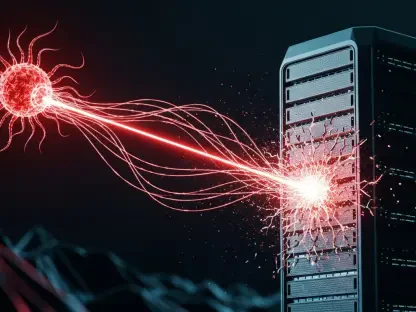In a world where technology is advancing at an unprecedented pace, humanoid robots like the Unitree G1 have become integral to various high-stakes environments, including research laboratories and law enforcement agencies, where their role in assisting with complex tasks showcases the pinnacle of innovation. However, recent revelations by cybersecurity experts have cast a dark shadow over their reliability. A detailed study by Alias Robotics has uncovered severe vulnerabilities in the G1, exposing risks of hacking and unauthorized data transmission that could compromise user safety and privacy. These findings not only highlight flaws specific to this model but also raise broader questions about the security of connected devices in sensitive settings. As reliance on robotics grows, understanding and addressing these threats becomes paramount to prevent potential misuse or breaches that could have far-reaching consequences. This exploration aims to shed light on the critical issues surrounding the G1 and the urgent need for enhanced protective measures.
Exposing Critical Design Weaknesses
The Unitree G1 robot, celebrated for its advanced capabilities, harbors significant security flaws that undermine its integrity in secure environments. A primary concern lies in its Bluetooth Low Energy (BLE) setup, which is essential for Wi-Fi connectivity but shockingly easy to exploit. Researchers from Alias Robotics revealed that the encryption protecting this connection relies on a single hardcoded digital key present in every unit. By merely encrypting a specific term with this static key, unauthorized access becomes possible, allowing hackers to assume full control over the robot’s functions. Such a breach could lead to the injection of malicious commands, potentially disrupting operations or endangering connected systems. This vulnerability underscores a fundamental oversight in the design phase, where convenience appears to have taken precedence over robust security protocols, leaving the G1 exposed to external threats that could manipulate its behavior with alarming ease.
Delving deeper into the design flaws, the implications of such weak encryption extend beyond mere access to control. Once compromised, the G1 could serve as a gateway to broader network attacks, affecting not just the robot itself but also other devices sharing the same digital ecosystem. The static nature of the encryption key means that a single successful hack could theoretically provide a blueprint for infiltrating every unit in existence, creating a cascading effect of vulnerability. This lack of individualized security measures is particularly concerning in environments like police departments or research facilities, where the stakes of a breach are extraordinarily high. The potential for hackers to cause physical malfunctions or extract sensitive operational data amplifies the urgency of addressing these gaps. Until manufacturers prioritize dynamic and unique encryption methods, devices like the G1 remain a significant risk, highlighting the critical need for a reevaluation of security standards in robotic technology.
Uncovering Hidden Data Transmissions
A particularly unsettling discovery about the Unitree G1 is its covert communication behavior, which operates without any user awareness or consent. Cybersecurity experts found that the robot transmits data to servers located in China at regular intervals of every five minutes, a process that raises immediate privacy concerns. While the specific content of this data remains undisclosed in the findings, the mere act of transmission without transparency is a glaring red flag, especially for users in sensitive sectors such as law enforcement or scientific research. This unauthorized activity transforms the G1 into a potential surveillance tool, capable of relaying critical information to unknown entities. Such behavior not only violates user trust but also poses ethical dilemmas regarding data sovereignty and the protection of personal or institutional information in an era where data privacy is a paramount concern across global jurisdictions.
Further exploration of this issue reveals the broader geopolitical implications tied to these unauthorized transmissions. For organizations operating in countries with strict data protection laws, the presence of a device that independently sends information to foreign servers could lead to legal and security challenges. The lack of clarity around what is being shared heightens fears of intellectual property theft or the exposure of confidential operational details. This situation is especially problematic in settings where the G1 might interact with classified or proprietary systems, potentially compromising national or corporate security. The absence of user control over this data flow emphasizes a critical flaw in the robot’s architecture, where functionality seems to override the fundamental need for transparency. Until such issues are rectified, deploying these robots in high-security environments remains a gamble, prompting a reevaluation of trust in manufacturers who fail to prioritize user autonomy over data handling.
Risks of Malicious Exploitation
Beyond privacy breaches, the Unitree G1 presents a chilling potential for being repurposed as a tool for malicious intent, amplifying its threat profile. Researchers discovered that the robot’s onboard computer can be manipulated to launch cyberattacks, effectively turning a helpful device into a weaponized asset within a network. This capability to execute offensive operations means that a compromised G1 could target other systems, disrupt services, or even facilitate data theft on a massive scale. The ease with which such transformations can occur, due to inherent security oversights, paints a troubling picture of the risks associated with deploying advanced robotics without adequate safeguards. In scenarios where these robots are integrated into critical infrastructure, the consequences of exploitation could be catastrophic, ranging from operational shutdowns to severe breaches of sensitive information.
Adding to the concern is the flawed encryption method used for the G1’s internal configuration files, which relies on a static key replicated across all units. This design choice means that a successful decryption on one robot could unlock vulnerabilities across the entire fleet, creating a systemic risk of unprecedented scale. Hackers gaining access to this key could orchestrate widespread disruptions or coordinate attacks using multiple units simultaneously, a scenario that becomes increasingly plausible as more robots are deployed globally. Such a flaw highlights a critical lapse in ensuring individualized security measures, leaving the technology open to exploitation by those with malicious intent. Addressing this issue requires a fundamental shift in how security is embedded into robotic systems, ensuring that each unit operates with unique protective layers to prevent a single breach from spiraling into a global threat.
Manufacturer Accountability and Silence
When the cybersecurity vulnerabilities of the Unitree G1 were brought to light, the response—or lack thereof—from the manufacturer raised additional concerns about accountability in the robotics industry. Alias Robotics attempted to engage with Unitree Robotics to report these critical flaws, only to encounter initial communication followed by complete silence. This lack of urgency or willingness to address the issues forced researchers to publicize their findings, aiming to protect users by raising awareness of the risks. The absence of a proactive stance from the manufacturer leaves current and potential users in a vulnerable position, unsure of whether patches or updates will ever be provided to mitigate these threats. This situation underscores a troubling trend where some companies may prioritize market expansion over the responsibility to ensure their products are safe from exploitation in real-world applications.
The implications of this silence extend beyond a single company, reflecting a broader challenge within the tech sector regarding manufacturer responsibility. When vulnerabilities are identified, timely and transparent action is essential to maintain trust and safeguard users, particularly in fields where security is non-negotiable. The inaction seen in this case could deter organizations from adopting advanced robotics, fearing the potential fallout of unaddressed flaws. Moreover, it places the burden on end-users to implement additional security measures, often at significant cost and effort, to compensate for inherent weaknesses in the product. This dynamic highlights the need for stricter industry standards and possibly regulatory oversight to ensure that manufacturers are held accountable for the security of their devices, preventing similar scenarios where critical flaws are left unresolved and users are left exposed to preventable risks.
Addressing Broader Industry Security Gaps
The vulnerabilities in the Unitree G1 are not isolated incidents but rather symptomatic of a larger issue within the robotics industry, where the pace of innovation often outstrips the development of robust security frameworks. As humanoid robots become increasingly integrated into everyday settings—ranging from homes to critical infrastructure—the potential consequences of security lapses grow exponentially. Experts are advocating for a paradigm shift toward adaptive cybersecurity frameworks that leverage artificial intelligence to detect and respond to threats in real-time. Such systems could dynamically evolve to counter emerging risks, offering a proactive rather than reactive approach to protection. However, the adoption of these advanced defenses remains limited, leaving many current devices like the G1 as potential liabilities in an interconnected digital landscape where threats are constantly evolving.
Looking ahead, the industry must prioritize security as a core component of robotic design, rather than an afterthought addressed only when breaches occur. This requires collaboration between manufacturers, cybersecurity professionals, and regulatory bodies to establish and enforce stringent standards that ensure devices are secure by default. The case of the G1 serves as a wake-up call, illustrating how easily advanced technology can become a vector for harm if protective measures are inadequate. Encouragingly, discussions around AI-driven security solutions suggest a future where robots could autonomously adapt to new vulnerabilities, reducing the window of exposure. Until such innovations become mainstream, organizations deploying these technologies must remain vigilant, conducting thorough security audits and demanding transparency from manufacturers to mitigate risks. Only through a concerted effort can the balance between technological advancement and safety be achieved, securing the future of robotics in society.









